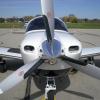Power settings at altitude
-
Members Online
- DXB
- GMBrown
- Modify201
- eman1200
- pkellercfii
- hubcap
- Mufflerbearing
- Dave B
- hammdo
- PT20J
- richardbrochu27
- kortopates
- jamiesj
- Yan X
- Rick Junkin
- Brian2034
- N201MKTurbo
- Marc_B
- 1980Mooney
- MB65E
- RangerM20
- MikeOH
- brad
- Marcopolo
- EricJ
- RescueMunchkin
- jeremyc209
- Bird1
- sandeepdutta
- exM20K
- Ibra
- Rwsavory
- 201Mooniac
- M20F
- TCC
- TX-Champ
- hazek
- flyboy0681
- KSMooniac


Recommended Posts
Join the conversation
You can post now and register later. If you have an account, sign in now to post with your account.